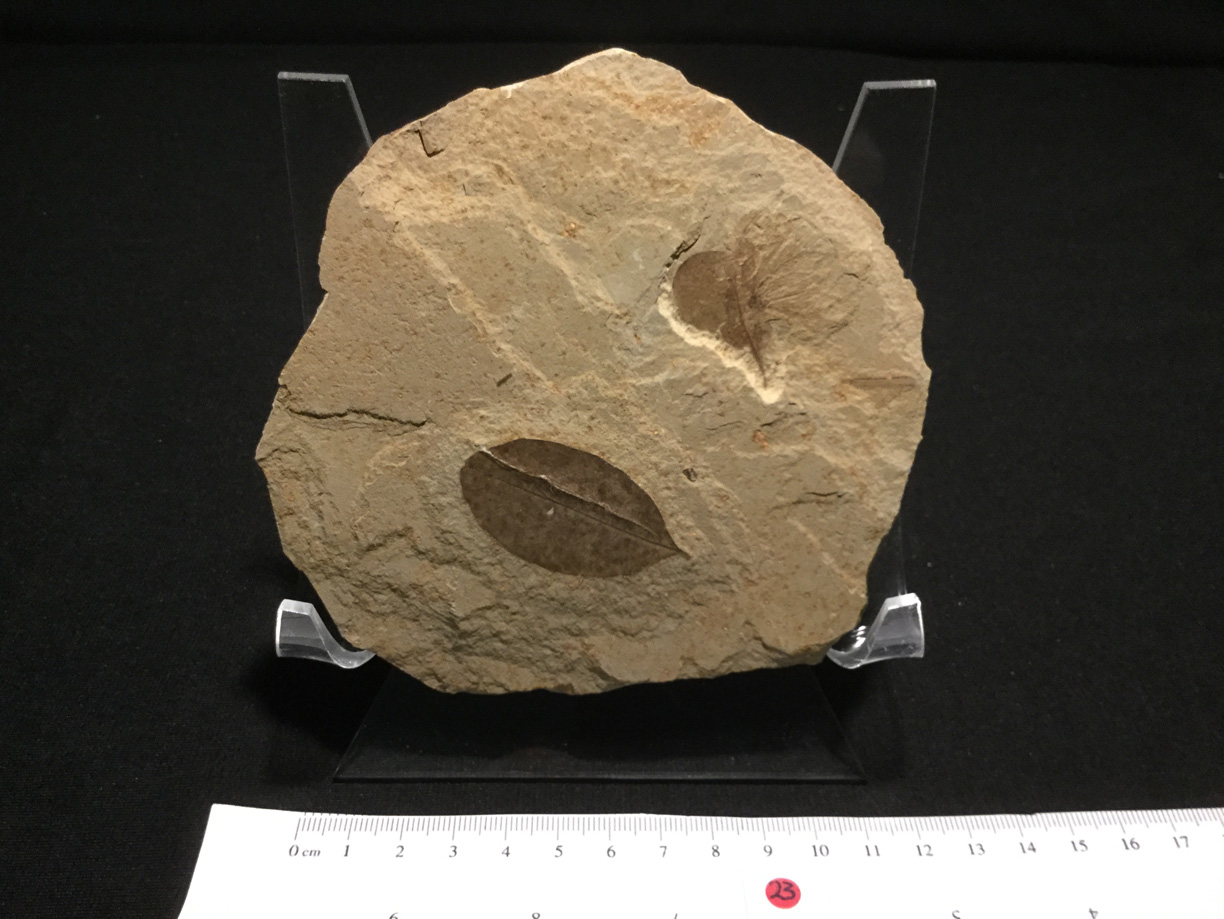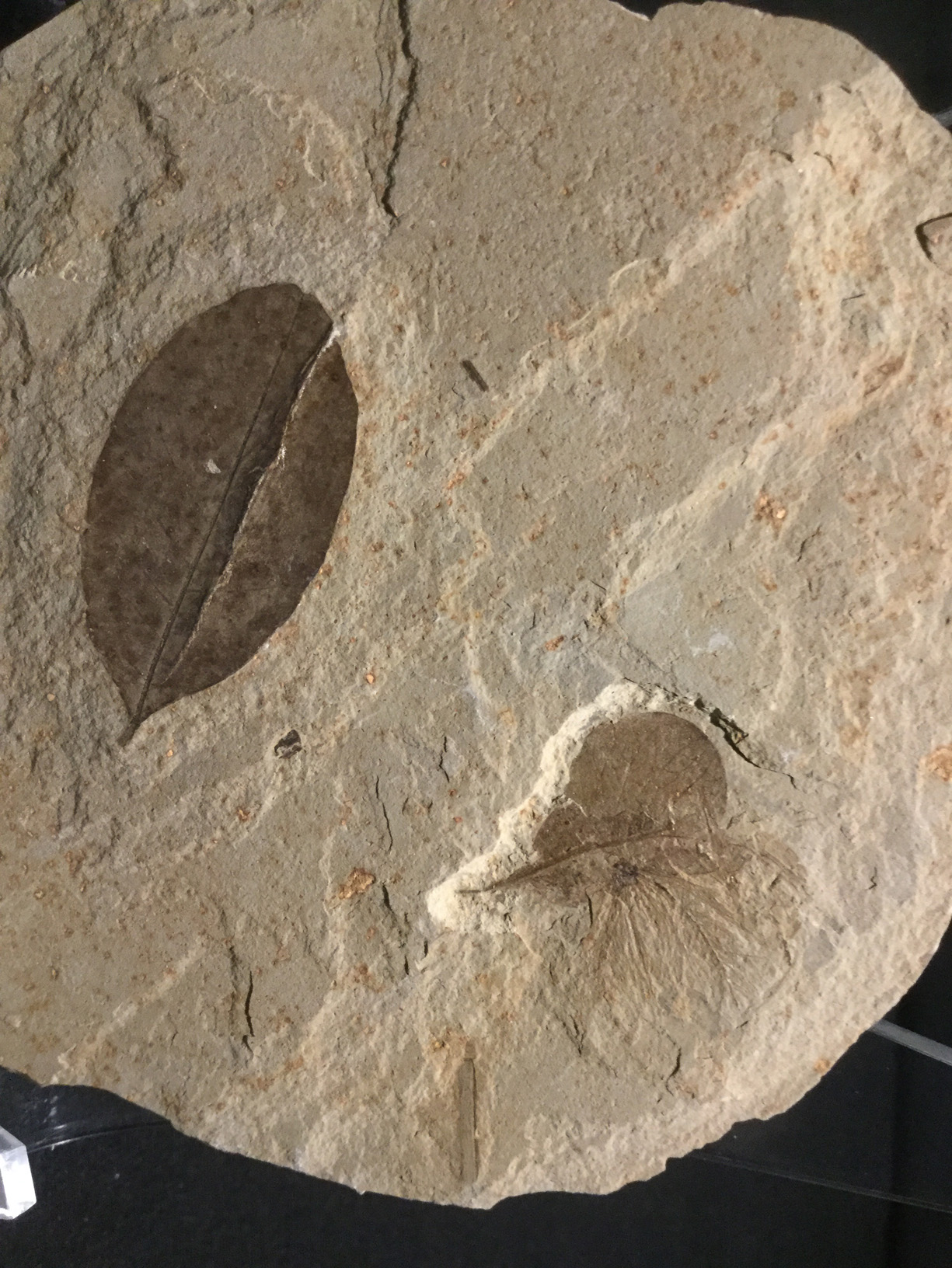
Eocene Green River Salvinia and Leguminosites
Salvinia preauriculata
Leguminosites lesquereuxiana
Green River FM (Parachute Creek Mbr)
Middle Eocene
Uintah County, Utah
Leguminosites lesquereuxiana
Green River FM (Parachute Creek Mbr)
Middle Eocene
Uintah County, Utah
This slab has a beautifully preserved example of the aquatic fern Salvinia and an excellent Leguminosites leaf. The leaf is over 4 cm.
Salvinia is a genus in the family Salviniaceae, and is a type of floating fern. There are at least 12 living species and are known by the common name watermoss. Salvinia is related to the other water ferns, including the mosquito fern Azolla. Recent sources include both Azolla and Salvinia in Salviniaceae, although each genus was formerly given its own family.
Salvinia, like the other ferns in order Salviniales are heterosporous, producing spores of differing sizes. However, leaf development in Salvinia is unique. The upper side of the floating leaf, which appears to face the stem axis, is morphologically abaxial.
The Fabaceae, Leguminosae or Papilionaceae, commonly known as the legume, pea, or bean family, are a large and economically important family of flowering plants. It includes trees, shrubs, and perennial or annual herbaceous plants, which are easily recognized by their fruit (legume) and their compound, stipulated leaves. The family is widely distributed, and is the third-largest land plant family in terms of number of species, behind only the Orchidaceae and Asteraceae, with about 751 genera and some 19,000 known species. The five largest of the genera are Astragalus (over 3,000 species), Acacia (over 1000 species), Indigofera (around 700 species), Crotalaria (around 700 species) and Mimosa (around 500 species), which constitute about a quarter of all legume species. The ca. 19,000 known legume species amount to about 7% of flowering plant species. Fabaceae is the most common family found in tropical rainforests and in dry forests in the Americas and Africa.
Salvinia is a genus in the family Salviniaceae, and is a type of floating fern. There are at least 12 living species and are known by the common name watermoss. Salvinia is related to the other water ferns, including the mosquito fern Azolla. Recent sources include both Azolla and Salvinia in Salviniaceae, although each genus was formerly given its own family.
Salvinia, like the other ferns in order Salviniales are heterosporous, producing spores of differing sizes. However, leaf development in Salvinia is unique. The upper side of the floating leaf, which appears to face the stem axis, is morphologically abaxial.
The Fabaceae, Leguminosae or Papilionaceae, commonly known as the legume, pea, or bean family, are a large and economically important family of flowering plants. It includes trees, shrubs, and perennial or annual herbaceous plants, which are easily recognized by their fruit (legume) and their compound, stipulated leaves. The family is widely distributed, and is the third-largest land plant family in terms of number of species, behind only the Orchidaceae and Asteraceae, with about 751 genera and some 19,000 known species. The five largest of the genera are Astragalus (over 3,000 species), Acacia (over 1000 species), Indigofera (around 700 species), Crotalaria (around 700 species) and Mimosa (around 500 species), which constitute about a quarter of all legume species. The ca. 19,000 known legume species amount to about 7% of flowering plant species. Fabaceae is the most common family found in tropical rainforests and in dry forests in the Americas and Africa.





